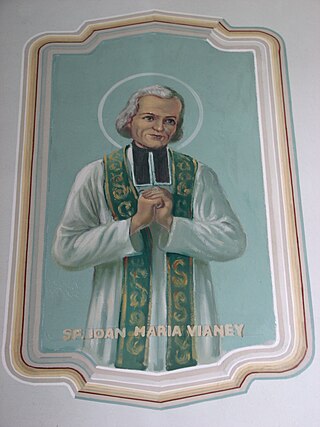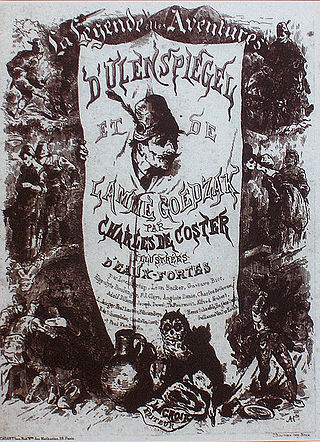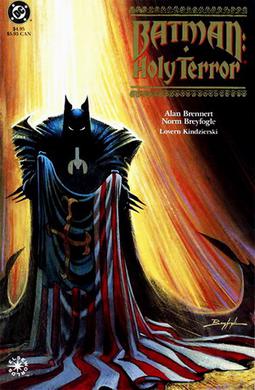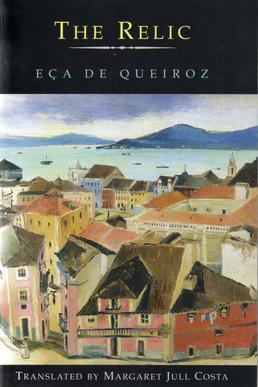
John Vianney, venerated as Saint John Vianney, was a French Catholic priest who is venerated in the Catholic Church as a saint and as the patron saint of parish priests. He is often referred to as the "Curé d'Ars", internationally known for his priestly and pastoral work in his parish in Ars, France, because of the radical spiritual transformation of the community and its surroundings. Catholics attribute this to his saintly life, mortification, persevering ministry in the sacrament of confession, and ardent devotion to the Blessed Virgin Mary. His feast day is August 4.

Sin City is a 2005 American neo-noir crime anthology film produced and directed by Frank Miller and Robert Rodriguez. It is based on Miller's graphic novel of the same name.

Goya's Ghosts is a 2006 biographical drama film, directed by Miloš Forman, and written by him and Jean-Claude Carrière. The film stars Javier Bardem, Natalie Portman, and Stellan Skarsgård, and was filmed on location in Spain during late 2005. The film was written, produced, and performed in English although it is a Spanish production.

The Princess Bride: S. Morgenstern's Classic Tale of True Love and High Adventure, The "Good Parts" Version is a 1973 fantasy romance novel by American writer William Goldman. The book combines elements of comedy, adventure, fantasy, drama, romance, and fairy tale. It is presented as an abridgment of a longer work by the fictional S. Morgenstern, and Goldman's "commentary" asides are constant throughout. It was originally published in the United States by Harcourt Brace, then later by Random House, while in the United Kingdom it was later published by Bloomsbury.

Lieutenant-Colonel Claude Cunningham Bruce Marshall, known as Bruce Marshall was a prolific Scottish writer who wrote fiction and non-fiction books on a wide range of topics and genres. His first book, A Thief in the Night came out in 1918, possibly self-published. His last, An Account of Capers was published posthumously in 1988, a span of 70 years.

Dark Habits is a 1983 Spanish black comedy film written and directed by Pedro Almodóvar and starring Julieta Serrano, Marisa Paredes and Chus Lampreave. The plot follows a cabaret singer who finds refuge in a convent of eccentric nuns, while the film is an exploration of the anachronistic situation of institutionalized religion in contemporary Spanish society.
The Aix-en-Provence possessions were a series of alleged cases of demonic possession occurring among the Ursuline nuns of Aix-en-Provence in 1611. Father Louis Gaufridi was accused and convicted of causing the possession by a pact with the devil, and he was tortured by strappado and his bones dislocated. He was then executed on April 1611 by strangulation and his body burned. This case provided the legal precedent for the conviction and execution of Urbain Grandier at Loudun more than 20 years later. This event led to possessions spreading to other convents and a witch burning in 1611.

The Legend of Thyl Ulenspiegel and Lamme Goedzak is an 1867 French-language novel by Belgian author Charles De Coster. Based on the Low German literary figure Till Eulenspiegel, Coster's novel recounts the allegorical adventures as those of a Flemish prankster, Thyl Ulenspiegel, directly before and during the Dutch Revolt against Spanish rule in the Netherlands.
Such Is My Beloved is a novel by Canadian writer Morley Callaghan. It was first published in 1934 by Charles Scribner's Sons in New York City and Macmillan of Canada in Toronto.

The Angel Wore Red, also known as La sposa bella in its Italian version, is a 1960 Italian-American MGM/Titanus coproduction war drama starring Ava Gardner and Dirk Bogarde. It was directed by Nunnally Johnson and produced by Goffredo Lombardo from a screenplay by Johnson based on the 1953 novel The Fair Bride by Bruce Marshall.

The Red Terror in Spain is the name given by historians to various acts of violence committed from 1936 until the end of the Spanish Civil War by sections of nearly all the leftist groups. News of the rightist military uprising in July 1936 unleashed a politicidal response, and no Republican controlled region escaped systematic and anticlerical violence, although it was minimal in the Basque Country. The violence consisted of the killing of tens of thousands of people, attacks on the Spanish nobility, business owners, industrialists, and politicians and supporters of the conservative parties, as well as the desecration and burning of monasteries, convents, and churches.
The Thomasian Martyrs were the Dominican Catholic priests who became administrators, professors, or students in the University of Santo Tomas, Manila. All of them gave up their lives for their Christian faith, some in Japan, others in Vietnam, and in the 20th century, in Spain during the Spanish Civil War. Lorenzo Ruiz de Manila was among the lay companions of the Thomasian martyrs of Japan.
During the Spanish Civil War Catholic people faced persecution from the Republican faction of the war, in part due to their support of the nationalists and the recently abolished monarchy. The Catholic Church venerates them as martyrs. More than 6,800 clerics and other Catholic people were killed in what has been dubbed the Red Terror. As of October 2022, 2,107 Spanish martyrs have been beatified; 11 of them being canonized. For some 2,000 additional martyrs, the beatification process is underway

On the road from Yelvala of Mysore to K R Nagara at about 25 km away we find a village called Dodde Koppalu. Left side of this road falls to Hunsur taluk and the right side belongs to K R Nagara taluk. Take a right turn at this village and go ahead. After a hamlet and a grove you are able to see twin towers of a church at a distance. That is the famous Doranahalli (Dornahalli) Church located 3 km away.

Batman: Holy Terror is an Elseworlds one-shot comic published by DC Comics in 1991. The story is written by Alan Brennert and illustrated by Norm Breyfogle. The graphic novel is significant in that it was the first to bear the Elseworlds logo.
The Indian Emperour, or the Conquest of Mexico by the Spaniards, being the Sequel of The Indian Queen is an English Restoration era stage play, a heroic drama written by John Dryden that was first performed in the Spring of 1665. The play has been considered a defining work in the subgenre of heroic drama, in which "rhymed heroic tragedy comes into full being." As its subtitle indicates, the play deals with the Spanish conquest of the Aztec Empire under Hernán Cortés.

To Every Man a Penny is a 1949 novel by Scottish writer Bruce Marshall. Two major characters in the novel, Gaston and Bessier, like the author himself, had legs amputated due to wounds suffered in World War I.

The Business of Dying is the first novel written by Simon Kernick. In it, Kernick introduces the character Dennis Milne, who becomes the lead character in several subsequent novels. The story is a crime thriller that follows Milne, a full-time police officer and part-time hitman whose targets turn out to be customs officers and an accountant. The novel was published in the United Kingdom in 2002 by Bantam and in the United States in 2003 by St. Martin's Minotaur.

The Relic is a novel written by the Portuguese writer José Maria de Eça de Queirós (1845-1900) and published in 1887. The most recent English translation, by Margaret Jull Costa, was first published in 1994, together with an Introduction by the translator.
Winds of the Night is a novel by the Catalan author and publisher, Joan Sales. It is set in a devastated and impoverished Catalonia under the heel of the Franco dictatorship after the Spanish Civil War. Its narrator is a Catholic priest who undergoes a major crisis of faith.
"Perhaps the worst of war is the peace that follows."














